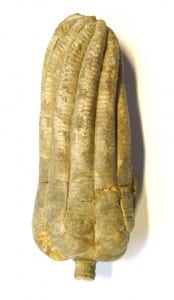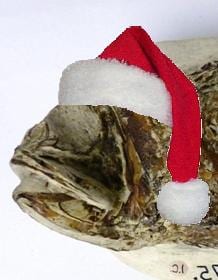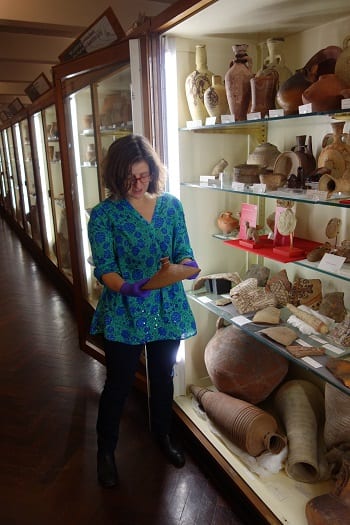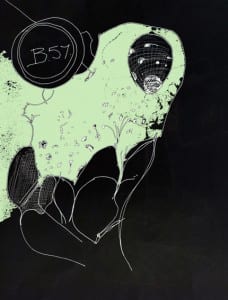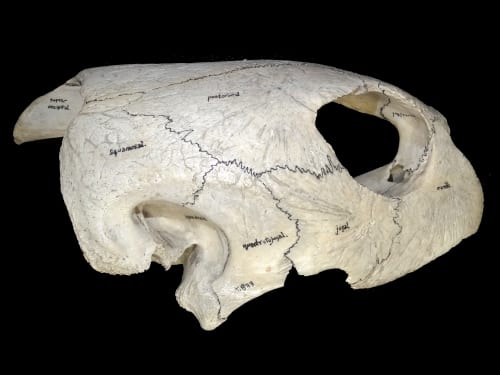The Top Ten Grant Museum Blogs of 2015
By Jack Ashby, on 8 January 2016
Happy New Year!
2015 was an absolute cracker for the Grant Museum, with our two exhibitions – Strange Creatures: The Art of Unknown Animals, and our Artist in Residence Eleanor Morgan’s Glass Delusions – as well as the massive Bone Idols conservation project. Together these helped us break all records for visitor numbers, as well as being voted by the public to win Time Out’s Love London award for being Bloomsbury, Fitrovia and Holborn’s most loved cultural attraction (beating some pretty stiff competion [COUGH/britishmuseum/COUGH])
As a way of looking back over this monster year, on Twitter over the past week we’ve been counting down the best of 2015’s blog – the Top Ten most viewed Grant Museum posts of last year*. Looking back, it’s certain that we’ve had a top year in terms of blogging, with 93 posts from Team Grant. But what were the best posts?
I’ve announced those ranking at 10 to 2 in the charts, and exclusively revealing here that the most popular post of 2015 is… Read the rest of this entry »
Specimen of the week 221: The mega-toothed shark tooth
By Will J Richard, on 4 January 2016
Hello and a Happy New Year to you Grant-fans. So, the first specimen of the week of 2016 falls to me, Will Richard. And I’ve chosen a monster to kick off the year: possibly the biggest ever fish with teeth to match. This one was found on the 2nd January 1880 (seasonal!) but people have been puzzling over these dental discards for generations. They were originally believed to be the dried tongues of dragons but actually I think the truth might be scarier…
Specimen of the Week 220: The Fossil Sea Lily
By Tannis Davidson, on 28 December 2015
It is perhaps no surprise that during December, most of the specimens featured in this blog tend to have associations with wintery Christmastime animals. There has been a reindeer, a polar bear, a robin, an owl and (last week) a partridge – all of which have been highlighted to kindle the yuletide cheer.
In a radical departure, here’s a specimen that has absolutely no connection to winter, snow or any December seasonal holiday. But does it bring joy? Yes. This is an amazing specimen. Would this be a great Christmas present? Absolutely. If you ever see one, keep me in mind.
Here it is – the one you’ve been waiting for – this week’s Specimen of the Week is the…
Underwhelming Fossil Fish of the Month: December 2015
By Mark Carnall, on 23 December 2015
All is calm, all is poor(ly preserved).
Found yon fossil fish, maybe a skull.
Fragments of scales, so broken and dull,
Unidentified piece,
U-hun-identified piece.
2016 is nearly upon us, but before it is, let’s take some time to reflect on the highly disappointing year of underwhelming fossil fish that has passed. If this is your first dip into this blog series then you’re out of luck. This series is an exploration of the frankly dull and uninteresting fossil fish that are found in museum collections the world over. Are they destined to a…erm…. a destiny in a museum drawer? Yes probably. Are they justifiably destined to an eternity in a museum drawer though? Yes, probably. But this series aims to celebrate them because they’re underwhelming because life shouldn’t be all about biggest, brightest and boldest.
This year has been the least whelming year so far.
Specimen of the Week 219: Partridge Cranium and Mandible
By tcrnrh1, on 21 December 2015
Rachel Bray reporting for Specimen of the Week duties. Christmas Week is officially upon us! Are you embracing bountiful amounts of merriness and mirth? No? Well then reading this blog will contribute a big ol’ Christmassy tick to your December to do list. Taking festive inspiration from the popular carol Twelve Days of Christmas, this week’s Specimen of the Week is…
Galton Island Discs
By Subhadra Das, on 17 December 2015
You’ll remember I have a motto? This time it’s the turn of the classic ‘Desert Island Discs’. Approaching Christmas, this seemed a good a time to take a more light-hearted look at Galton while simultaneously sneaking in multiple references to his considerable influence on the way we live now.
Each entry lists the track title, year it came out, the album it featured on and the artist, along with an extract of lyrics which relate to the story of Galton’s life and work. Click on the track title for a link to a YouTube video so you can get a taste of what the songs sound like[1].
- 1. “Flagpole Sitta”, 1997, Where Have All the Merrymakers Gone?, Harvey Danger
Been around the world and found that only stupid people are breeding, The cretins cloning and feeding , And I don’t even own a tv.
This indie anthem for the disenfranchised – superlatively used as the theme for the Channel 4 comedy ‘Peep Show’ – ironically and concisely captures a Galtonian worldview. Like many rich white men who benefitted incalculably from the colonial project, Galton was concerned that the quality of the British population was being irreversibly eroded by the Industrial Revolution which, among other things, allowed masses of the ‘unfit’ to agglomerate in metropolitan centres and increase their numbers.
Specimen of the Week 218: The Sugar Glider
By Jack Ashby, on 14 December 2015
Climbing up things can be challenging, be it hills, cliffs, trees or stairs. Climbing down, however is arguably far more difficult – your eyes are further from your hand-and foot-holds, your body is pointed in the wrong direction and gravity combines with momentum to pull you down faster than you’d like.
Due* to the many drawbacks of climbing downwards, gliding has evolved many times in the animal kingdom – there are many species which have flaps of skin which form parachutes to slow their descent. Their names often contain the word “flying”, but true flight requires flapping wings. This post is not about flying lemurs, flying frogs, flying dragons, flying snakes, the four-winged dinosaur Microraptor, or even flying squirrels. This week’s Specimen of the Week is the far more accurately named… Read the rest of this entry »
Petrie Museum Ceramics – Conservation Needs Survey
By Nick J Booth, on 10 December 2015
This is a guest blog written by our Senior Conservator Susi Pancaldo.
The Petrie Museum of Egyptian Archaeology houses one of the largest and most important collections of Egyptian materials in the UK. About 12,000 of the 80,000 objects are made of ceramic and, of these, roughly 3,400 are on display in the Pottery Gallery!
Look, draw, scan, invert, colour in. REPEAT.
By Jack Ashby, on 9 December 2015
This is a guest post from our artist in residence Eleanor Morgan. It is part of a series exploring the exhibition Glass Delusions at the Grant Museum of Zoology.
I have a pile of drawings and sketches of sponge specimens made during my residency at the Grant Museum, which aren’t exhibited in the Glass Delusions exhibition. Looking closely and following the lines of these animals with my eyes and hand was a way of getting to know them, particularly as I couldn’t touch them directly. They were also a way of thinking, of letting forms and ideas develop between the specimens and me. Read the rest of this entry »
Specimen of the Week 217: annotated green turtle half-skull
By ucwepwv, on 7 December 2015
This week I’ve picked a specimen to talk about that is being used in comparative zoology practicals at the moment. I chose it because it has been helpfully labelled to show each of the bones which fit together to form the remarkable piece of biological architecture that is the skull. So this week’s Specimen of the Week is…
 Close
Close



